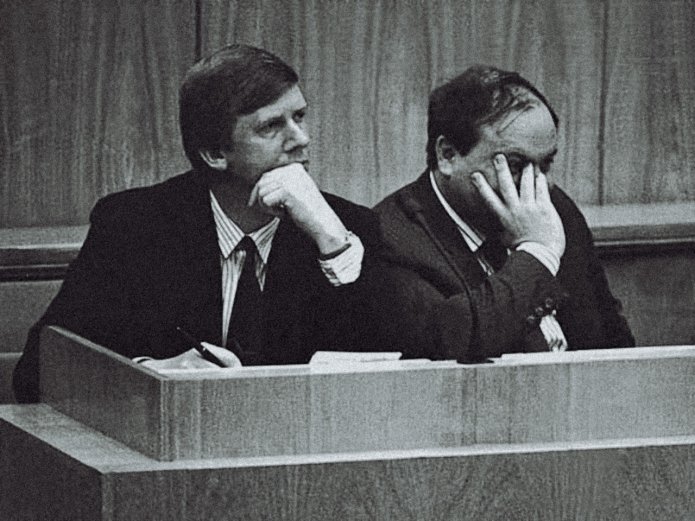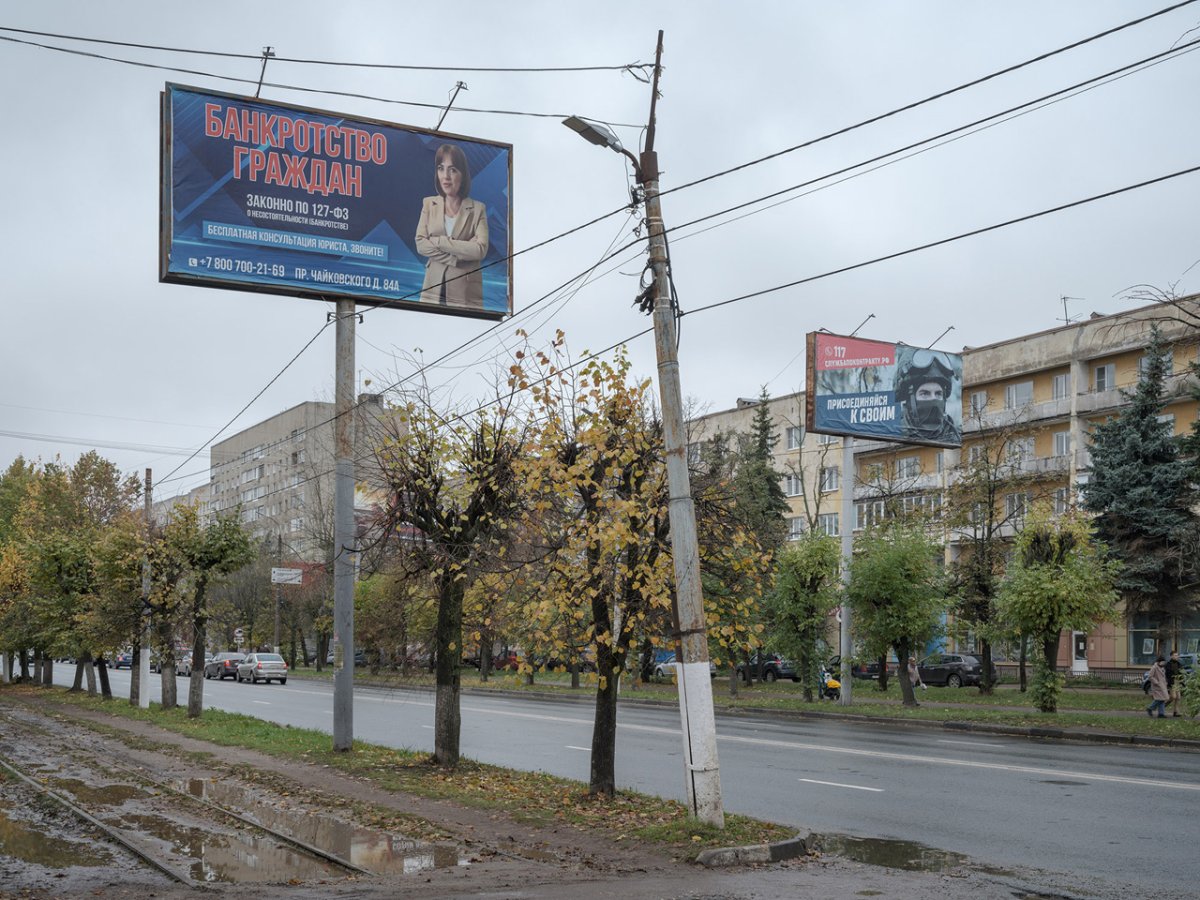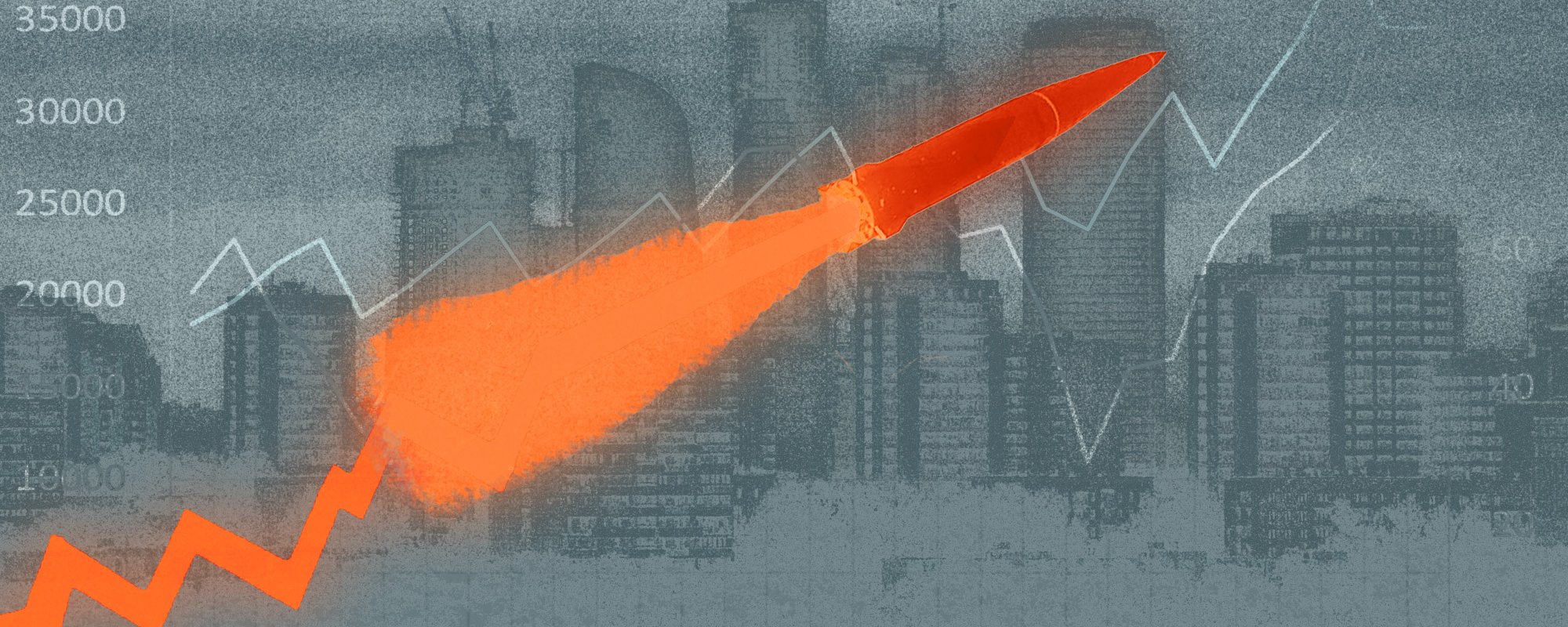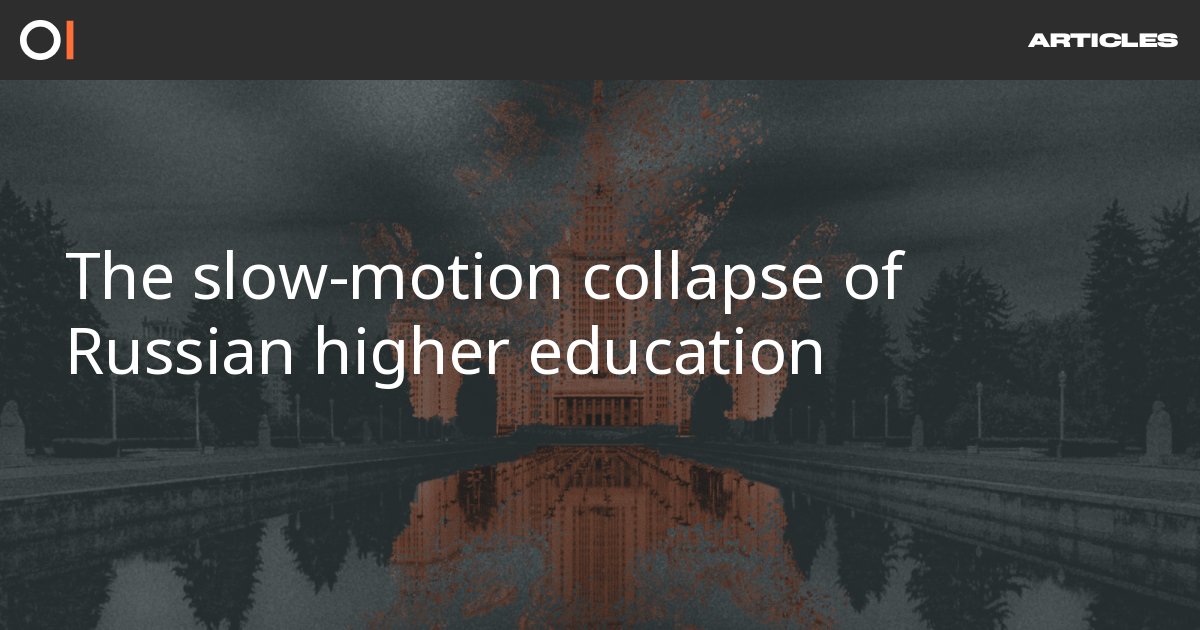Nick Trickett pulls from his upcoming book to explain how Russia’s technocracy built a system crimping Russia’s development.

Nick Trickett is an associate director with S& P Global Commodity Insights’ Investing in Energy service. Previously editor-in-chief of FPRI’s BMB Russia and his own blog and newsletter OGs and OFZs, he has nearly a decade’s experience following, analyzing, and writing on Russia’s political economy. He holds a BA in comparative literature from Haverford College, an MA in Russia/Eurasian regional studies from the European University in St. Petersburg, and an MSc in international political economy from the London School of Economics. An American by birth and Chicagoan by the grace of god, he lives in London with his wife Ella.
Since the start of 2023, coverage of the Russian economy has consistently invoked a wartime
Appeals to a boom are not only questionable based on available evidence, they suffer from collective amnesia about the Russian economy over the last twenty years. Russians and Russian businesses’ economic memory does not begin the day of the full-scale invasion. Elites’ obsession with austerity, the core economic principles that defined the economic consensus of
These principles were cemented by the country’s post-Soviet technocracy, the collection of ministers, officials, civil servants, and academic economists serving in ministerial roles, predominantly at the Ministries of Finance and Economic Development or Bank of Russia, or in advisory roles to the presidential administration in the Kremlin or Duma.
In the 1990s and 2000s, many of the members of this technocracy came from the same social and ideological spheres as the economic liberals like Yegor Gaidar and Anatoly Chubais, educated to be market fundamentalists. But once they were incorporated into the regime after Yeltsin’s exit from power, they steadily lost any influence as

In my forthcoming book Empire of Austerity: Russia and the Breaking of Eurasia, I look to recreate step-by-step how Russia’s technocracy stabilized the country in the late 1990s only to fashion a series of self-imposed constraints on policy that were co-opted by the
The roots of Russia’s wartime growth and the underwhelming benefit experienced by households go as far back as 1998. When Russia defaulted on its debts that August, the resulting devaluation of the ruble eviscerated the meager savings millions of Russians cobbled together after a near decade-long recession.
Yet devaluation proved a lifeline for countless businesses that suddenly became competitive against imports. The economy bounced back. Russia’s technocracy learned painful lessons regarding the need to stabilize the ruble’s value and avoid any future risk of a race among foreign investors or states to call in repayment for debts owed them. Going forward, public debt was a last resort to be avoided whenever possible, lest it risk a currency crisis or run on the state’s finances.
The Global Financial Crisis in 2008 was a watershed for all the wrong reasons. The government’s initial response to the ensuing financial crisis was huge. Finance minister Aleksei Kudrin speedily marshalled an intervention worth over 7% of GDP, to date the largest spending splurge in post-Soviet history and a sum larger in comparative terms than the initial American response to the crisis. However, its scale was actually far less impressive because the government had run a budget surplus of equivalent size for the year at that point and money was being taken out of sovereign wealth funds to avoid issuing more too much public debt.
Most of the initial spending went to propping up stock prices or banks, not helping people losing their jobs. In 2009, the only additional spending to support the public came from maternity capital payouts and similar, narrow measures. Large pension increases only took effect in 2010 and the rest of the
Refusing to spend more and to spend more directly putting money into the public’s hands left huge scars. Hundreds of thousands of jobs in manufacturing were permanently lost while unemployment shot up. A national housing bubble brought on by the flood of money into real estate burst as real estate values per square meter fell 33% and vacancy rates reached 1998-levels, a period when there were at least 10 million people unemployed in Russia.
Prices only recovered thanks to a bounceback in oil markets and a deluge of borrowing among middle-class Russians trying to maintain their living standards. Stocks that once drew in hundreds of billions from foreign investors no longer did, sullied by the 2008 invasion of Georgia and perceptions of greater political risk in Russia. The technocrats presided over the hollowing of the economy at precisely the moment Putin, Medvedev, and their respective teams decided to prioritize spending on military modernization.

What followed was an anemic, lopsided recovery. When adjusted for inflation, retail spending among Russians fell every year from 2010
Upon Putin’s return to the presidency in 2012, the technocracy feared the country was entering longer-term stagnation unless reforms were undertaken. The oil & gas revenues that were redistributed to drive growth in the 2000s no longer had much effect. Nearly 60% of the federal budget already went towards pensions and benefits and demography was becoming a problem. Where the workforce added 2.5 million people after 1998, it peaked around 76 million in 2010, declining annually by over 0,3% afterwards, a fall equivalent to losing 4 million people by 2024.
Without more labor to produce more goods and services, policymakers realized the country needed a productivity boom. Incomes rose thanks to state benefits, but wages weren’t growing significantly. Since 1998, the state had systematically underinvested in roads, railways, ports, and utilities whose costs ballooned from self-dealing and corruption, a shortcoming that now impeded growth.
When Moscow mayor Yuri Luzhkov oversaw the construction of the fourth ring road around the city, the cost per kilometer was higher than that of the Millau Viaduct in France, the world’s tallest bridge standing over 340 meters tall. Moscow’s banks and financial analysts estimated prior to the financial crisis that half of all inflation — the rate at which prices broadly rise — was caused by these physical constraints. As much as 20% of the cost of goods came from transport domestically compared to just 7% in Europe.
Faced with worsening constraints on the economy, growth petered out by 2013. When Crimea was annexed, the Russian economy had already flirted with recession. Sanctions, an oil shock, a currency devaluation, and banking crisis compounded the punishing austerity budgets adopted after 2014. Siluanov’s Ministry of Finance was so intent on balancing the budget, they reduced spending every year from 2016
Since the ruble was worth roughly half what it had been before the annexation and so many consumer goods were imported, most Russians saw their spending power take a considerable hit. Meanwhile, the agricultural lobby and other business interests chased subsidies to reduce imports, driving up costs for the public. Austerity made sense as an initial response to sanctions, but was so zealously applied, incomes remained lower than 2013 at the end of the decade.
COVID was an altogether different beast, a shock the likes of which no one in Moscow could have prepared for. While Mikhail Mishustin proved an able administrator for the regime’s needs, the economic interventions pursued in response to the pandemic were smaller in GDP terms than even the underwhelming 2009 stimulus under Medvedev.
After the
Healthcare was actively undermined by the regime leading up to COVID. After 2012, the May Decrees dismantled a significant portion of the medical system’s capacity to handle the pandemic. The number of doctors steadily declined after 2010, with a loss of one-third of the nation’s epidemiologists between 2013 and 2019. Since Putin decreed doctors and nurses be paid more, staffs were cut and consolidated.
Much of the pay increases were, in fact, simply payments for overtime that had previously been withheld, given to medical staff forced to work longer hours from staff cuts. While senior doctors may have earned 50–60,000 rubles a month prior to COVID, the median medical salary for nurses or junior doctors was closer to 30
Given the government was under strict orders to minimize the budget deficit, Mishustin forced the economy back open to reduce the financial cost of managing the pandemic. Businesses only welcomed the maneuver because owners realized no help from the state was forthcoming. Cabinet members regularly implored businesses to manage the pandemic on their own. It’s no wonder that excess mortality — a measure of actual deaths compared to expected mortality rates — reached 30,000 a month by mid-2020.
Russia led the world in attributable deaths in 2021 after vaccines launched, with estimated total excess mortality reaching over 1.3 million. A majority of those who died were still working age, inaugurating what became a labor market crisis after the invasion of Ukraine. Russia’s loss of life to COVID was comparable to the United States, a country with over twice the population.
Mortgages were the main instrument the regime leveraged to ride out the pandemic. By offering mortgage subsidies, the cabinet and presidential administration believed they could expand access to housing. In turn, this would buy the public’s apathy as the pandemic raged. Instead of expanding access to housing, it triggered a housing bubble. There weren’t enough labor migrants or working age Russians in construction to meet demand. Between 2011 and 2020, the number of working age Russians from 20
The war on Ukraine marked what appeared to be a break from the usual tradition of spending as little as possible faced with a crisis. Though it took seven months to take full effect, the surge of war spending to procure weapons, build new factories or expand existing ones, to build fortifications, and anything else that might aid the war was the first
Past crises had largely seen the state focus on initial firefighting measures followed by tax cuts, an easing of inspection burdens on businesses, and other half-measures to keep the economy afloat. But the need for weapons, ammunition, and other military needs was immediate. Budget rules were suspended to allow 90% of the money from state procurement contracts to be paid up front to businesses. Once mobilization was announced in September 2022, federal and regional officials turned to increasingly large bonuses and payments for death in service to herd labor into the military.
Money went out the door and into the hands of businesses immediately, filtering through the household pocketbooks. Conscription and the demand for hundreds of thousands of contract soldiers prompted large bonuses and took huge numbers of working age men out of the workforce. Businesses scrambled to find labor wherever they could. These shortages grew more acute as casualty rates eventually climbed towards COVID-like levels of 30-40,000 a month.
To believe life in wartime is better for the average person is to effectively believe that the first sign of a truly tight labor market since the Soviet collapse transformed the economy. Yet the COVID mortgage subsidies holding mortgage interest rates at 8% increased demand so much, housing prices rose 65% over 2020
That might have been manageable with subsidies, but once they were ended in June 2024, only the massive bonuses paid to soldiers can cover deposits for mortgages with rates of interest approaching or exceeding 20% while sales slowed dramatically. These dynamics are even more stark because housing construction has become such an important contributor to GDP and depends on labor migrants who’ve come to Russia in lower numbers since COVID.

Inflation has become so entrenched that interest rates for credit cards or loans are now at highs not seen in decades. The more that regime policy pushes people to buy things made domestically, the more exposed price increases are to the lack of labor. Employment surveys estimate the country is currently short 2 million specialists to meet all its demand. That figure is expected to double to 4 million by 2029. Businesses have to pay more to compete for labor, driving up prices for everything the longer the war continues.
Food prices have risen faster than official inflation. One survey conducted by Russian Field found 40% of respondents estimated food prices rose more than 30% in 2024 alone. Food and basics still account for nearly 40% of the average household’s spending, a figure that’s barely changed in twenty years despite statistics showing income growth.
Even domestic tourism, once a promising area for
What does this mean for Russians’ everyday life? The war has redirected financial resources that were artificially scarce for much of the past quarter century towards the war effort without doing anything for basic public goods and services. How can hospitals and outpatient clinics meet demand for veterans’ care after they return? How do local communities adapt when the national police force is short 20% of its staffing needs and organized crime has enriched itself from the trade in sanctioned goods?
The regime can print money. It can’t print people. Consigning hundreds of thousands of working age men to death or significant injuries with an already shrinking workforce cost Russians and the regime immensely in the years ahead. Since 2013, nothing has been done to push the country outside of an average of just 1-2% annual growth. Even the war
The longer the regime ignores the public’s needs and refuses to spend more actively for the public good, the more zero-sum politics become. Without new sources of wealth or a growing economic pie, elites must fight over the precious sources of money or power still standing as the regime orients all resources towards sustaining the war. The greatest tragedy of the last three years is that the Kremlin showed it can
Austerity is not the chief cause of the war, nor does it explain all of Russia’s problems. But it has inflamed virtually every social ill and incentivized the misgovernance of the economy and, eventually, pursuit of war for those seeking largesse from the state. Those who have benefited financially from the war are a considerable minority, largely those profiting directly off the war, off trade, or off businesses most exposed to trade. Most people are working longer hours and seeing their costs of living rise faster than their pay. Whatever Russia’s future looks like after this war hopefully ends, only a reckoning with the preference to deprive the public can fundamentally change its political economy.




 Download PDF version
Download PDF version